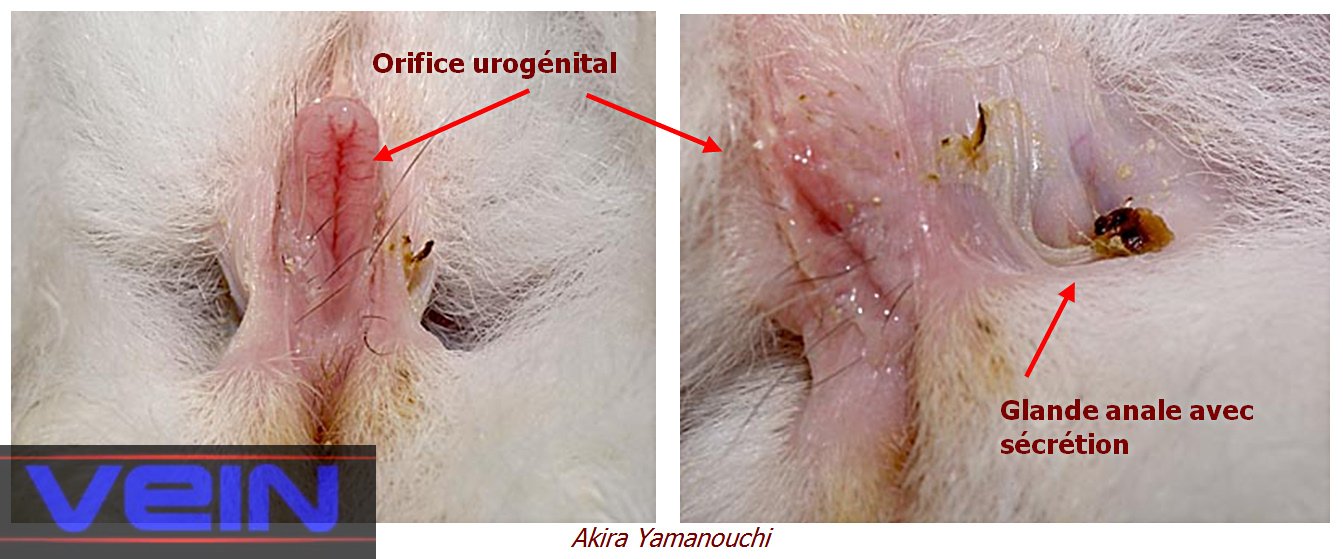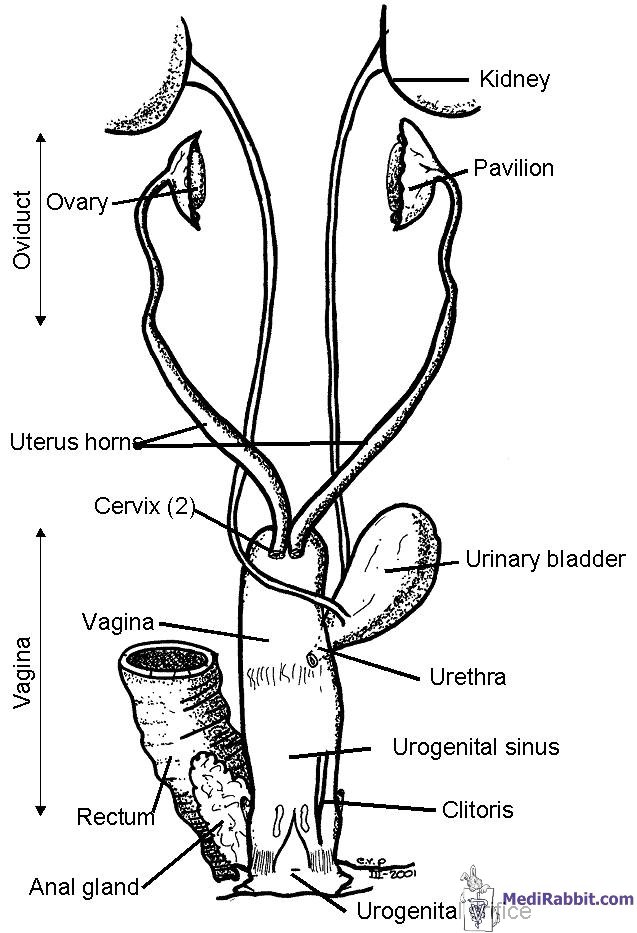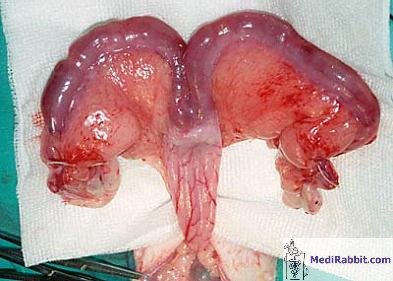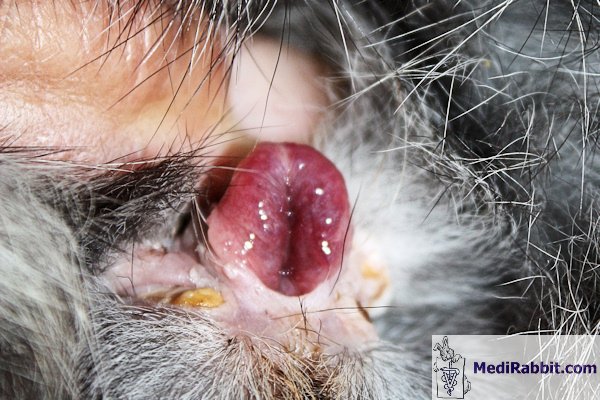Reproductive tract of the female rabbit
Esther van Praag, Ph.D.
MediRabbit.com is funded solely by the
generosity of donors.
Every donation, no matter what
the size, is appreciated and will aid in the continuing research of medical care
and health of rabbits.
Thank you
|
Warning: this file contains
pictures that may be distressing for people.
|
The
reproductive organ of the female rabbit is considered as "primitive". Indeed,
the split two-horned system is only observed in monotreme
egg lying mammals and in lagomorphs (pika, hare and
rabbit). The organ is hold in place by a broad ligament that is anchored at 4
points under the vertebral column.
Sex
differentiation occurs during the embryonic phase, on the 16th day post
fertilization. The ovaries grow from an aggregate of cells that is lying near
the original testes. The development of the ovaries is accompanied by the
degeneration of the testes. The
development of the ovules (female reproductive cell) starts around the 21st
day and continues till birth, around the 30th day. The first ova and follicles
start to develop only 13 days after birth. The reproductive organ of the female
rabbit is duplex: the uterus is formed by two independent horns, split over
their whole length (± 7 cm). Each horn possess its
own cervix. The ovaries, ellipsoid bodies that have a maximal length of 1-1.5
cm, are located at the end of the uterus, right under the kidneys. They are
hidden by the mesometrium (portion of the broad
ligament that separates and encloses the uterus) and fat.
The vagina does not present any
particularities. This part of the reproductive tract is large, with the
urethra joining halfway, at the level of the vaginal vestibule. At the end of
the vagina, the glands of Bartholin and prepucial
glands can be recognized. The external part of the genital system, the vulva, is surrounded by fat glands. Sometims, these are filled with a white fatty subtance and become visible. Unlike an abscess or rabbit syphilis, these white "pimples" are normal and should not be treated.
Sebaceous (fat) glands surround the external genital parts of female and male rabbits. They are often not visible, except when full with a white fatty secretion. Here in this male rabbit. Females have those glands too, less numerous. The age at which sexual maturity is
reached depends on the size and the breed: while small and middle sized
rabbits become adult between 4 and 6 months, it may take between 5 to 8
months for giant breeds. As a rule, it is considered that a rabbit is adult
and able to reproduce when it has reached 75 to 80% of its adult size. Female rabbits do not have a true estrus
(heat) cycle with regular periods of heat (estrus), as do other small animals
like dogs or cats. In fact, adult female rabbits are considered to be “reflex ovulators”, always in estrus .
This means that ovulation is induced only after coital stimulation and
happens automatically 9 to 13 h after the copulation act.
Female rabbits are, however, not continuously ready to get fertilized and produce offspring, A certain cycle does nevertheless exist. Factors inducing an estrus cycle are not well understood; they may be seasonal factors, light intensity, length of the day, temperature and, possibly, molting. Females that are ready to be fertilized (presence of ripe follicles) present changes of the external parts of female genitals (vulva): swelling and dark red to purple coloration. Female rabbits are then receptive to a male rabbit and accept to mate when their vulva is reddish/purple. When a doe is in a less fertile period, her vulva is pale and small. She will not cooperate, refuse the presence of a male rabbit and will refuse to be mounted. This is no clear indication though, as some female rabbits will mate when
their vulva is pale and small.
Michel Gruaz Swollen purple vulva of a receptive female To avoid problems related to mating, health (ovarian
adenocarcinoma, endometritis) or/and unwanted litter, ovariohysterectomy is
recommended, starting at the age of 6 months. The breed of the rabbit must be
taken into account, before performing the operation. Acknowledgement
Thanks are due to Michel Gruaz (Switzerland) and to Akira Yamanouchi, for
their permissions to use pictures from VEIN (Veterinary Exotic Information
Network, https://vein.ne.jp/).
Further
Information
Elizabeth V. Hillyer,Katherine Quesenberry,Sandra
Valkoff (1997) Ferrets, Rabbits and Rodents:
Clinical Medicine and Surgery. Saunders W B Co., p. 230. K. Laber-Laird, P. A. Flecknell, M. Swindle (1996) Handbook of Rodent and
Rabbit Medicine. Elsevier Science, p. 243. C . A Mc Laughlin,
R. B. Chiasson (1990) Laboratory Anatomy of the
Rabbit. McGraw Hill, p. 83. |
|||||
e-mail: info@medirabbit.com








